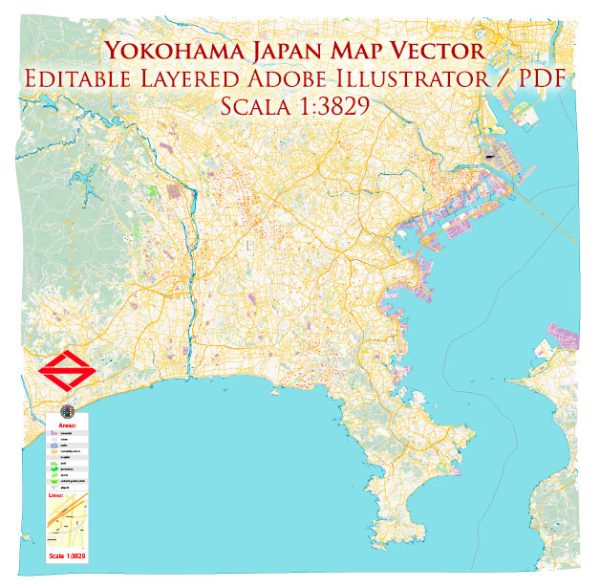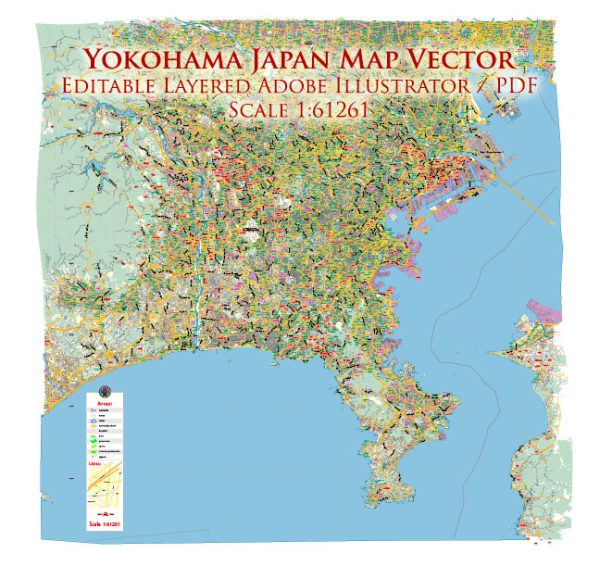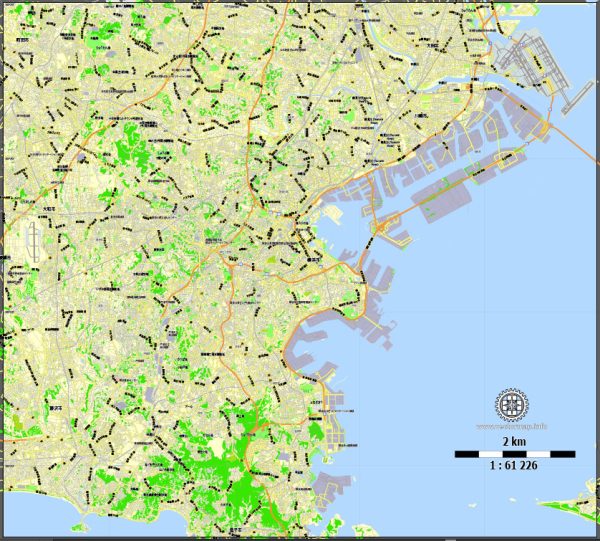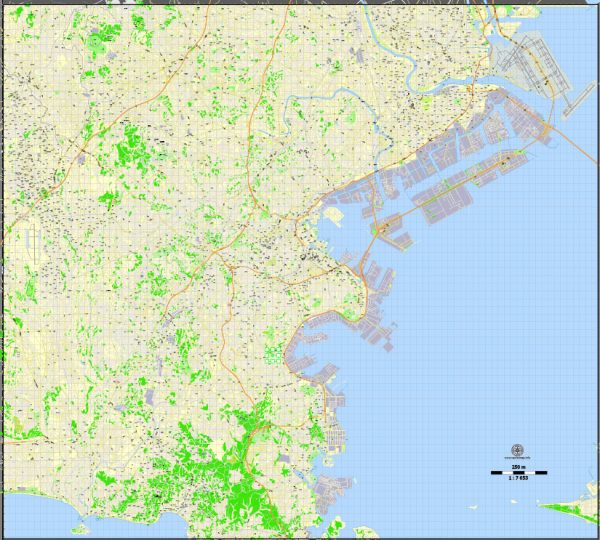Yokohama, a major city in Japan, has a rich history of urban development and is known for its modern and cosmopolitan atmosphere. Here is a brief description of Yokohama’s urban development:
- Historical Background: Yokohama’s development as a port city dates back to the mid-19th century when Japan opened its doors to international trade after centuries of isolation. The signing of the Treaty of Kanagawa in 1854, led by U.S. Commodore Matthew Perry, marked the beginning of Yokohama’s transformation from a small fishing village into a thriving international port city.
- Port Development: Yokohama’s strategic location on Tokyo Bay made it an ideal place for international trade. The city’s port facilities were continuously expanded and modernized over the years to accommodate the growing volume of cargo and passenger traffic.
- Growth as an International Hub: Yokohama’s development as a major port and international trade hub attracted people and businesses from around the world. The city’s diverse population and cultural influences contributed to its cosmopolitan character. The Yamate district, for example, is known for its historic Western-style houses that were built during this period.
- Modern Infrastructure: Yokohama has a well-planned and modern infrastructure with wide streets, parks, and waterfront areas. Land reclamation projects expanded the city’s footprint into Tokyo Bay, creating more space for development.
- Landmarks and Skyscrapers: The cityscape of Yokohama is characterized by numerous landmarks and skyscrapers, including the iconic Landmark Tower, which was once the tallest building in Japan. These modern architectural marvels are a testament to the city’s economic and technological advancement.
- Yokohama Chinatown: One of the most famous areas in Yokohama is its Chinatown, which is one of the largest in the world. It offers a unique blend of Chinese culture and architecture and has become a major tourist attraction.
- Parks and Green Spaces: Yokohama is known for its parks and green spaces, such as Yamashita Park, Sankeien Garden, and the beautiful waterfront promenades, providing residents and visitors with places to relax and enjoy the outdoors.
- Cultural Institutions: Yokohama is home to a variety of cultural institutions, including museums, art galleries, theaters, and concert halls. The Yokohama Red Brick Warehouse, for example, has been transformed into a cultural and shopping complex.
- Transportation: Yokohama is well-connected to the greater Tokyo metropolitan area with an extensive public transportation network, including train lines and buses. The city’s accessibility has further contributed to its development as a business and commercial center.
- Sustainability Initiatives: In recent years, Yokohama has also been proactive in implementing sustainable and eco-friendly urban development projects. The city has initiatives to reduce carbon emissions and improve its environmental footprint.
Yokohama’s urban development reflects the city’s dynamic growth from a small fishing village to a bustling international hub with a rich cultural heritage, modern infrastructure, and a commitment to sustainability. It continues to evolve and adapt to the changing needs and aspirations of its residents and businesses.





 Author: Kirill Shrayber, Ph.D.
Author: Kirill Shrayber, Ph.D.